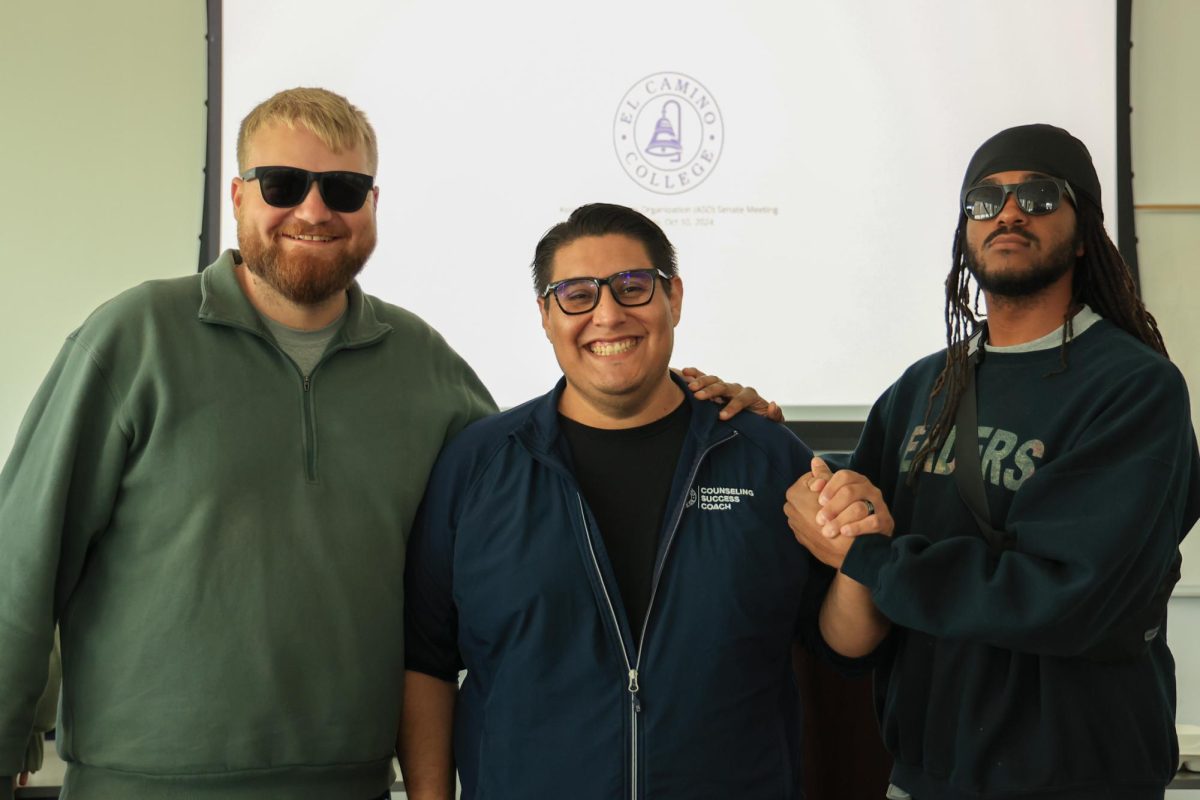Onlookers stare into a void as the lights begin to dim and the illusion of a moon starts to rise. In the blink of an eye, the sky is filled with thousands of stars. The most unbelievable aspect of it all is that they are actually staring at the ceiling of the campus Planetarium.
Friday night, the new Planetarium projector was demonstrated, displaying the new capabilities of one of six such projectors in the world.
In the corner of the room, a Daily Breeze article displays pictures of the last projector, purchased three days after the landing on the moon in 1969, faintly resembling a metal basketball.
“There are still a lot of features that we are just finding out and don’t know about,” David Vakil, astronomy professor, said.
Out of the six Goto Chronos projectors in the world, the college has the most updated one.
The projector was purchased with funds brought by Measure E, costing about $400,000.
“The classes are awesome, without exception,” Bob Hammond, astronomy student, said.
“People pay big bucks at a commercial planetarium to see what we have here; you can really see some great stuff,” he said.
Some attributes of the projector include the ability to see 8,500 stars at 6.5 magnitude, making for a very crisp image that fits perfectly to the Planetarium’s 30-foot dome ceiling.
The projector utilizes its16 star plates of images, which are then displayed on the dome’s surface, and includes 13 colored stars, including the three brightest stars, Sirius, Canopus and Aldeberan (in descending order).
In addition, there are 24 constellation outlines and 26 extended objects, or things that can be seen by the naked eye but are not stars; An example is the nearby Andromeda galaxy.
“We can see the sky from any time, any place, anywhere near the sun,” Vakil said.
The last projector has lost some of its effectiveness due to technological-age disadvantages and unavailability of replacement parts.
The old projector has been disassembled and stored above the Planetarium.
The last projector held only about 1,500 stars and had only two available constellation outlines, which remained the same for about 35 years.
“We can go anywhere to see the sky. It’s a good educational tool for future generations,” Chris Hwang, music major, said.
Other aspects of the projector include its program abilities to simulate types of astronomical phenomena.
Examples include a simulated meteor shower, viewing the path of a man-made satellite’s orbit, an Aurora Borealis simulator, examining orbits of planets in our own galaxy, other galaxies and environmental fixes, such as adding clouds or altering light pollution effects in an area.
The projector can also simulate time travel and how the sky would have looked like in this area 12,000 years ago or up to 12,000 years into the future by inputting a specific date.
“This projector is important because many people at El Camino have never been outside of Los Angeles and don’t know what the whole sky looks like,” Perry Hacking, astronomy professor, said.
Though this technological advancement has put the facilities on the map, there is a lack of people who can manage the equipment for its display, limiting its viewing opportunities to mostly astronomy students.
The addition of a planetarium manager could increase these opportunities so that others could get to see the shows.
“We need a planetarium manager so that it can be opened on the weekends for fun and educational shows,” Hacking said.








